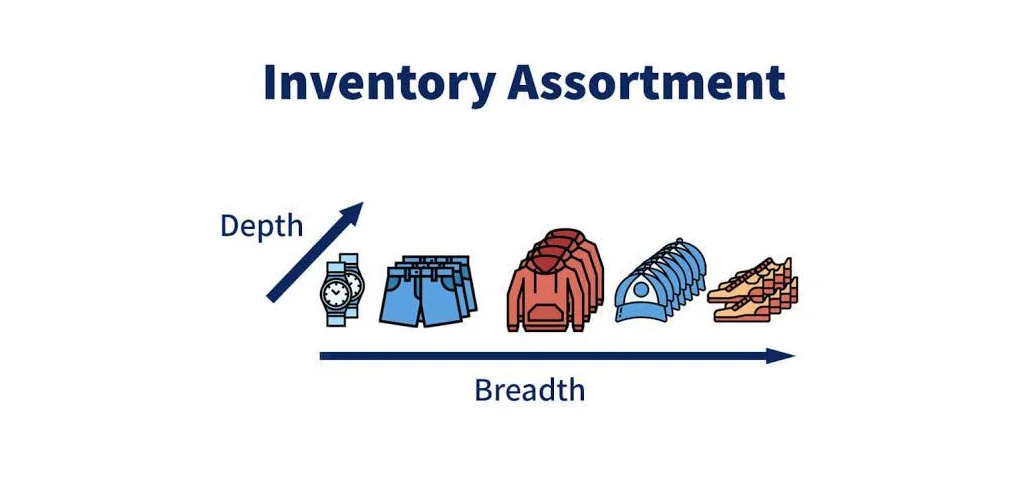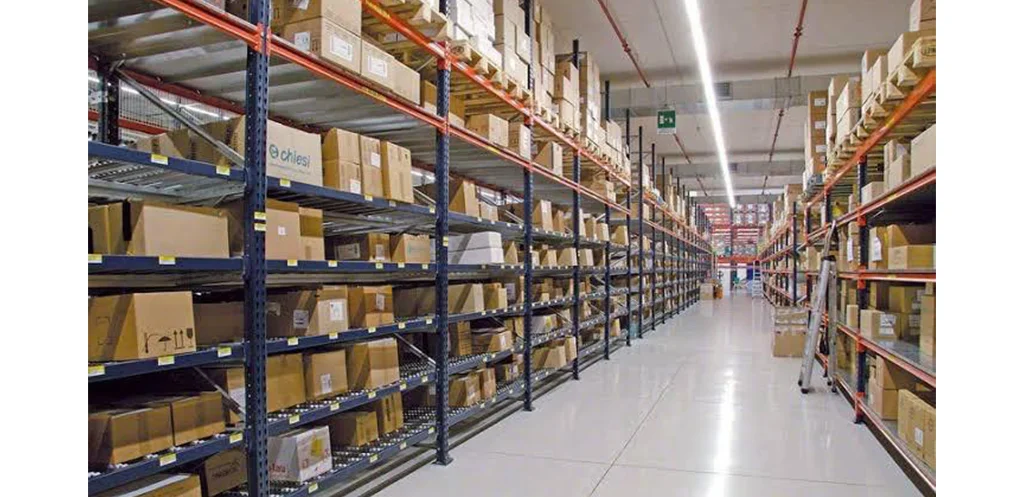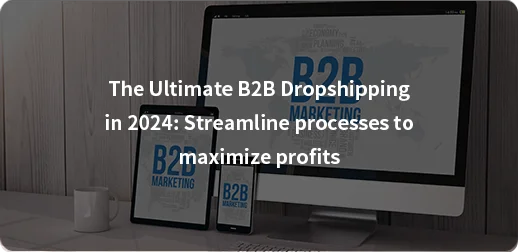In a dropshipping business, there are times when the inventory doesn’t get sold as it was planned. Hence, it stays on the shelves of the storage till it begins to lose its demand.
Over time, this excess stock will become obsolete and will fail to be of any value to the business.
There are many disadvantages of excess inventory for a dropshipping business. Hence, it is important to know how it can be avoided.
If the business is facing an issue of excess inventory, then they should be aware of the strategies to deal with it efficiently.
This article will take you through the disadvantages, causes and the strategies to deal with excess inventory.
This is your ultimate guide to avoid losses and maintain a cost-effective inventory.
What is excess inventory?
Excess inventory means that the commodities aren’t sold but have reached the end of their life. In simple terms, they are no longer in demand and are expected not to be sold.
This makes them surplus merchandise that fills up the spaces of the warehouse and is expected to remain there only.
The excess inventory indicates poorly controlled stock management. This can result from supplier constraints, poor analysis of demand, overbuying, cancelled orders, and many more.

However, these issues can easily be resolved through smart inventory management solutions.
Disadvantages of excess inventory
Excess inventory is not good for the company’s cash flow. This surplus stock takes up the precious space on the shelves while bringing no gains at all. Hence, this is a total loss.
You wouldn’t want to pay extra costs to keep your inventory. You also wouldn’t like getting decreased profit margins.
Let’s look into the disadvantages of excess inventory in more detail:
1-Tying Up Working Capital
When a business buys more merchandise than it can sell, it ends up tying its working capital.
The money is blocked and cannot be utilised in the business again.
Many factors lead to this, for instance, misjudging customers’ demand, supply chain inefficiencies, and even fearing stockouts.
A business can ensure a smooth capital flow with an efficient inventory analysis.
2-Causing dead stock
Deadstock means any stock that stays within the warehouse and hasn’t been turned over in a year. Deadstock can result from any miscommunication between the warehouse and management teams.
For example, if a business doesn’t communicate properly the amount of inventory they require to meet the demand, then the warehouse may produce excess inventory.
This is a burden for the business and can cause them to face losses.
3-Raising the inventory costs
Excess inventory takes up the storage space; hence, this can increase the inventory carrying costs greatly.
Businesses are required to pay the expenses associated with inventory holding. This will include the charges of capital, storage space, inventory service, and many more.
All of these costs are an extra burden on the business, and they can negatively impact the company’s profits.
Imagine, you want to sell a couch but you have to regularly maintain it till it gets sold. The more time it would take to get sold, the more effort it will require for its upkeep.
4-Decreasing the profit margins

The excess inventory, if not sorted out quickly, can lose its value. As time passes, the product is no longer in demand. This makes it harder to sell and gain any profits from it.
Furthermore, it takes shelf space away from new items, which would have gained the business more profits.
Excess inventory should be sorted out as soon as possible. If not, then it would get cheaper with each minute passing by.
Hence, most businesses also tend to sell their excess inventory at low prices, even if it reduces their profit margins.
For instance, the excess inventory was purchased by you for $10 and is now selling at $5. A new in-demand product is costing you $5 and can gain you a profit of $15.
Won’t you clear out your excess inventory even if you suffer from a temporary loss?
Causes of excess inventory
You might be wondering what can cause excess inventory. The following are the leading causes:
Supplier restraints
To ensure a successful inventory management plan, It is vital to work with a trustworthy supplier.
Inefficient suppliers can create issues in their supply chain or cause longer lead times. This will result in a delay in receiving the supplies.
If this issue persists, then you shouldn’t send them a large quantity order. This is because you might receive the order when the demand has died.
Hence, to avoid the danger of having surplus inventory, it’s critical to deal with suppliers that ship timely.
Inaccurate demand forecasting

Poor demand forecasting can lead to dead stocks filling your storage space. Businesses are required to have a proper inventory management and demand analysis system to avoid this concern.
If you inaccurately predict the demands, then you might end up having the wrong amount of supply, too.
This can cause the surplus stock to quickly accumulate. To make sure you can sell your stock as quickly as possible, it is important to have precise demand forecasting.
Inefficient inventory management
Inefficient inventory management can result in stocks staying on the shelves of the inventory for a much longer period of time.
Sometimes, this is done on purpose as a strategic move to sell the product at full price one day.
However, holding and managing stagnant inventory can come at a very expensive cost for businessmen.
With time many additional costs get attached to the excess inventory like storage charges.
This means that even if the product gets sold at full price, the business will still suffer from losses rather than gain any profit.
Hence, it is advised to sell the products at a discounted price to get rid of the obsolete inventory as quickly as possible. This helps avoid incurring further costs.
7 ways to prevent excess inventory
1.Forecast the true demand
The main reason behind ordering extra inventory is that businesses often fail to predict the true demand for the product.
The culprit behind this can be their faulty forecasting procedures, which lead to too much or too little product.
For example, red sweaters become trendy but you fail to predict the high demand accurately. According to your analysis, you stock 1000 SKUs only. These run out but the demand still persists.
This means that you made limited profits from your 1000 SKUs while you could have sold more if you had more stock.
This can cause big blunders. For instance, if you fail to predict the high demand, you can only make limited profits from your limited stocks.
On the other hand, if the amount of inventory you order is more than what you can sell, then the surplus will lead to losses.
Hence, when forecasting the demand, you need to estimate the shift in client preferences; this will save you from ordering far too much of the wrong product. You can also take help from previous sales performance.
However, seasonal purchasing habits, fluctuations in the competitive environment, assortment adjustments, and many other variables impact on customer preferences.
Forecasting the true demand is the first step to avoiding excess inventory.
2.Plan your merchandise assortment.
Merchandise assortment planning affects how customers view your brand. It determines the sorted product categories along with how much you should spend on your inventories.
Many believe that assortment planning can lead to an increase in inventory costs. However, this is not the case.
It is important to note that despite all products seeming superior, only a few products give most of the profits.

Merchandise assortment is crucial as the lineup provides customers with a variety of options from any given category to pick from.
Hence, for variety, it is important to add rarely sold products to the list too. Don’t forget to treat the best-selling products differently.
For example, you can sort your gym clothing merchandise with water bottles. Customers will see more value in such bundles.
Use efficient planning analytics to develop assortment plans that can help you identify the top performers.
3.Time your purchasing and allocation
To make your inventory successful, you need to pick an appropriate time. This means that your purchase orders should never be late.
However, buying early can also be a risky move as the products might end up sitting on the shelves.
You should be aware of the fact that shippers frequently charge by container. Accurate timing can help you aggregate your shipment, reducing transportation costs.
There are shipment delays in the supply chain, too. Hence, they should be taken into consideration. To choose an appropriate timing, a demand forecast can be of great help.
Businesses should also look out for bulk discounts offered by vendors to attract larger order placements or to choose new products.
This might seem appealing, but in reality, it can lead to more costs in markdowns. Hence, you should always negotiate with your vendors before placing the order.
You can also avoid risk by refraining from purchasing everything at once. Discuss a pilot project with your chosen vendor.
This project offers you an ideal opportunity to purchase more products if demand exists.
4.Optimise logistics, storage, and safety
Your supply chain process should integrate your vendors whenever possible. This will allow you to receive accurate products at the right time.
This will also ensure that you have a greater insight into how your product is moving through the entire chain.
Hence, you can also save money that might have been spent on volatile vendor lead times.
Businesses are encouraged to use advanced retail analytics. These work by combining vendor data with your demand forecast.

When both are well aligned, you can choose the recommended safety stocks. These are more appropriate to incorporate into your purchase orders.
5.Automatic replenishment process
Advanced analytics can automate the process of reordering the replenishments.
You can customise many options to automatically reorder supplies timely. This automation will save time, allowing you to focus on more value-added tasks.
You will also need less human intervention to take care of replenishments. The time you save through this can be utilised for promotional planning.
Inventory and promotional planning results should be aligned well to avoid empty shelves and dissatisfied customers.
Hence, your inventory analysts must plan for replenishment that can even cater to the promotion’s sales increase.
This is important because, during the promotions, you can’t place new orders as it is expensive to produce and ship such small quantities.
To maximise promotional return, promotional and inventory planning should be integrated.
6.Transfer to avoid markdowns.

Excess inventory might call for expensive solutions.
There are instances when a popular item isn’t in stock at one place while it is overstocked at another place. On top of this, where it is overstocked, its demand is lower.
So, businesses tend to buy small quantities to restock their supplies. These products are then sold in places where they can sell at a better profit margin.
For example, you have summer stock left but the summer season is over in Europe. You can transfer these stocks to regions that stay warm throughout the year.
However, most of the inter-store transfers are led by store managers. These managers respond to inventory issues with these tactics to avoid markdowns.
Advanced analytics and AI retail tools allow businesses to have an efficient and proactive approach when balancing their inventory.
Inter-store transfers are known to be the most profitable as you can easily minimise your excess inventory by replenishing stores with the inventory you have already purchased.
7.Optimising price
The price of the product is directly proportional to its demand in the market. Hence, demand forecasts and advanced analytics can help optimise the price of your products.
Using the information, you can aim to maximise profitability. This means that you can determine beforehand the initial, promotional, and closeout prices for your products.
It is more important to optimise the price of products which have a low-profit margin to avoid excess inventory costs.
If you are selling a new product, then lifecycle pricing plans can help you find the best combination of demand, sales price, and profit margins.
Most often, a product is launched at a higher price, which is gradually lowered. This is to balance the sales and profit.

Hence, it is vital to examine the pricing alternatives in markets using analytical tools.
A strategic approach towards pricing will help you make the best markdown decisions later on at the end of your product’s lifecycle.
This means that you should be able to clear out your excess inventory by putting big discounts without facing losses.
Conclusion
In conclusion, it is important to dispose of the excess inventory as soon as possible. However, it should be done in a way that can help the business gain maximum profits.
Effective inventory management in relation to demand forecasting can help prevent excess inventory in the first place.
If these measures are not taken into consideration, the business will suffer from high additional costs. This can be a hurdle in their path to success.
Droppshipping companies can opt for efficient fulfilment services like Globallyfulfill to manage their inventory. This can save them time, labour and extra expenditure.
The service providers will ensure that you have ample stock to sell while reducing the risk of excess inventory.
















